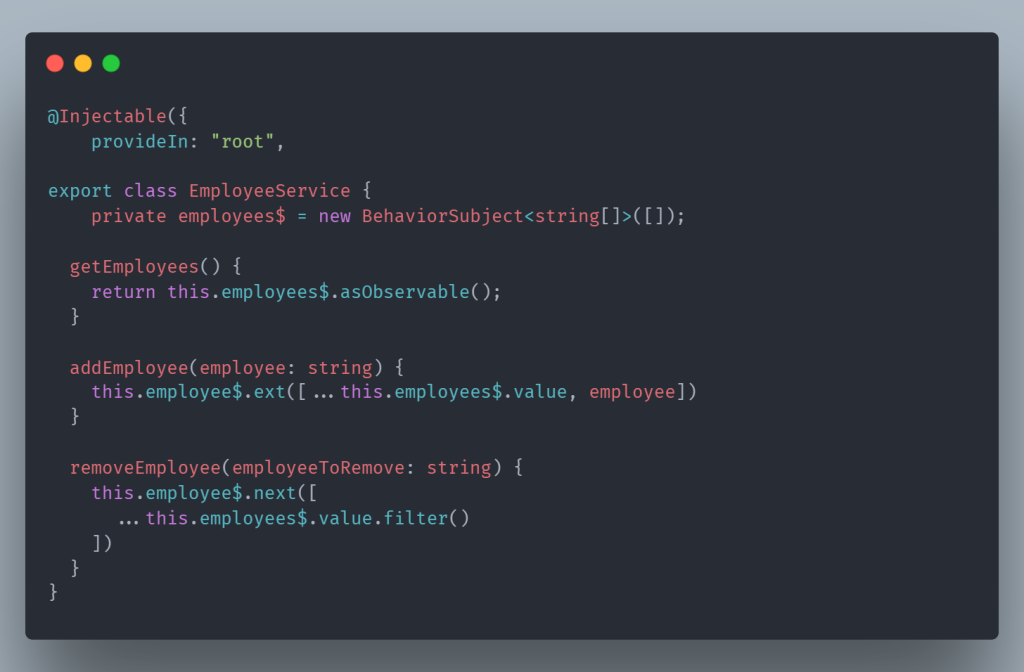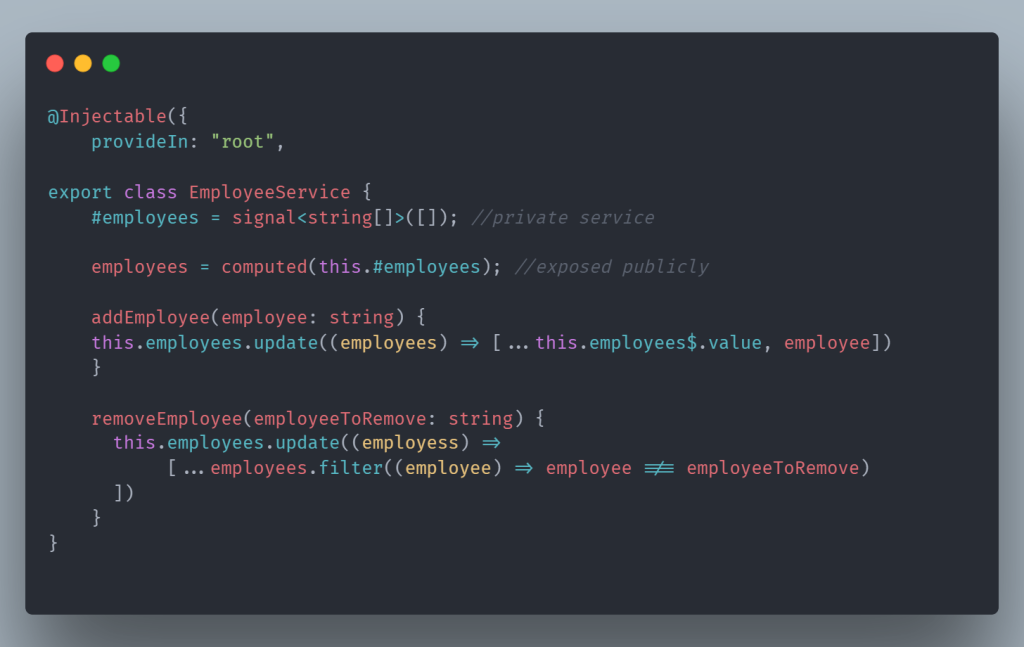
Signal vs BehaviorSubject
In Angular, managing state and reactive programming are crucial for building dynamic and efficient applications. Both BehaviorSubject from RxJS and Angular Signals can be used for these purposes, but they have different use cases and characteristics.
BehaviorSubject
- Initial Value: Requires an initial value upon creation.
- Current Value Access: The current value can be accessed via the
.valueproperty. - State Sharing: Commonly used for sharing state between components and services.
- Observable: It is both an observable and an observer, meaning it can emit new values and be subscribed to.
- Multiple Subscribers: Can have multiple subscribers, all receiving the latest emitted value.
Uage Example:
import { BehaviorSubject } from 'rxjs';
export class DataService {
private dataSubject = new BehaviorSubject<string>('initial value');
data$ = this.dataSubject.asObservable();
updateData(newValue: string) {
this.dataSubject.next(newValue);
}
}
// In a component
this.dataService.data$.subscribe(value => {
console.log(value);
});
Angular Signals
Not a part of RxJS; typically used in a more custom reactive system or state management library. Used to represent a piece of reactive state that can be read and updated.
- Simpler State Management: Often used for simpler state management scenarios where the complexity of RxJS is not required.
- Reactive Updates: Provides a way to reactively update and read state.
- No Initial Value Requirement: Can be used without needing to specify an initial value (depending on implementation).
Usage Example:
import { createSignal } from 'some-reactive-library';
const [count, setCount] = createSignal(0);
// Read the signal
console.log(count()); // 0
// Update the signal
setCount(1);
console.log(count()); // 1
below example code we can see the use case of Employee service using both Signal and behaviorsubject feature

